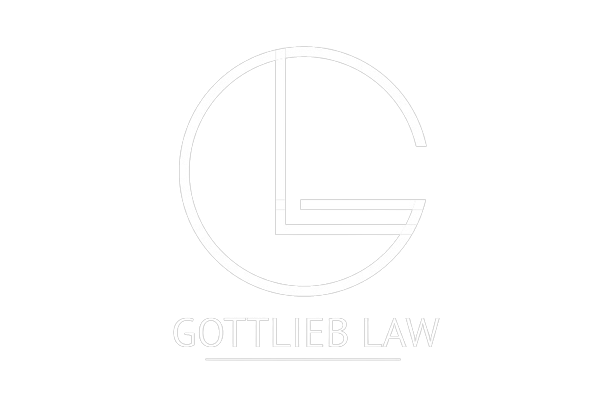Gottlieb Law, PLC provides this article for information purposes only and nothing herein creates an attorney-client relationship. You should not take any actions in reliance on any of the information contained herein without consulting with qualified legal counsel first and reading this article is not a proper substitute for seeking legal advice of your specific situation. Laws change over time and you should seek counsel to discuss any specific legal questions.
In Arizona, the beauty of the landscape is matched by the severity of its wildfires, making the protection of property against wildfire a top priority for homeowners. The convergence of arid climates, dense foliage, and expanding urban interfaces has escalated the fire risk, positioning fireproofing homes, creating defensible space, and understanding insurance coverage as critical defensive measures. The prevalence of Arizona wildfires underscores the necessity for comprehensive strategies in wildfire protection and fire mitigation to safeguard homes and communities.
Gottlieb Law emphasizes the importance of legal frameworks in fortifying properties against such threats. Through a keen focus on fire prevention, managing wildfires, and enhancing forest fire management, the firm guides clients in navigating the nuances of insurance policies and the legalities of home hardening. This article aims to equip property owners with knowledge and strategies to legally protect property against wildfire risks in Arizona, detailing steps for fireproofing, securing adequate insurance coverage, and leveraging community and government resources for an integrated approach to wildfire protection.
Understanding Arizona’s Wildfire Risks
Arizona’s wildfire risks are multifaceted and evolving, influenced by a combination of natural factors and human activities.
Environmental Factors and Human Development: The state’s wildfire crisis is exacerbated by heavy fuel accumulation, dry weather patterns, and human development within fire-prone ecosystems. Rising temperatures, changing precipitation patterns, and decreasing humidity further complicate the fire risk landscape. In addition to this, certain areas of Arizona may face above-average fire activity in 2024 due to increased fuel loading.
Risk Assessment Tools and Data:
- The Arizona Wildfire Risk Assessment Portal (AZ WRAP) offers a suite of applications for diverse users to determine the wildfire risk level of properties and surrounding areas.
- The Arizona Communities At Risk (CAR) assessment system helps estimate wildland fire risk for communities and identify areas for fuels reduction projects.
- Over 120,000 homes in Arizona are at risk of wildfire damage, highlighting the need for comprehensive fire prevention and mitigation strategies.
Preventive Measures and Resources:
- The Arizona Department of Forestry and Fire Management and the Arizona Fire & Medical Authority provide vital resources and information on wildfire risks and prevention efforts.
- Funding under HB 2001 supports Arizonans in fireproofing homes and creating defensible spaces.
- Homeowners are advised to prepare their properties for the wildfire season by removing potential fuel sources and making landscaping and structural adjustments to reduce fire risk.
Understanding these risks and utilizing available resources are crucial steps in legally protecting property against wildfire risks in Arizona.
Legal Framework for Property Protection against Wildfires
In Arizona, the legal framework for protecting property against wildfire risks is comprehensive, involving a multi-tiered approach that spans individual homeowner responsibilities to community-wide initiatives.
Homeowner Responsibilities and Legal Liability:
- Homeowners are tasked with maintaining their property to minimize wildfire spread. Failure to comply could result in legal liability, especially if a wildfire spreads from their property to another.
- Adherence to guidelines set by local fire departments or homeowners associations is often required, ensuring that individual actions contribute positively to the broader community’s fire mitigation efforts.
Community and Statewide Efforts:
- Communities can become Firewise® USA sites, collaborating on wildfire prevention and adopting specific landscaping and building materials to resist ignition.
- The state forester plays a pivotal role, authorized under Arizona Revised Statutes, Title 37, to prevent and suppress wildfires on various lands, highlighting the importance of cooperative agreements for effective wildfire management.
Regulations and Planning:
- Zoning laws and Community Wildfire Protection Plans (CWPPs) dictate land use and development intensity, incorporating wildfire risk into planning decisions.
- Building codes and the International WUI Code (IWUIC) set standards for construction and maintenance, emphasizing ignition-resistant materials.
- The Bureau of Land Management (BLM) and Arizona Department of Forestry and Fire Management enforce policies and provide resources, such as the Nonnative Vegetation Species Eradication Fund, to support wildfire risk reduction efforts.
Creating a Defensible Space
Creating a defensible space around your home is a critical step in protecting property against wildfire risks in Arizona. This involves modifying vegetation and other materials to reduce the wildfire threat and provide a safer environment for fire suppression efforts. Here’s what you need to know:
Zone Division and Guidelines
- Zone 0 (Ember-Resistant Zone): Extends 0-5 feet from buildings, emphasizing non-combustible materials like gravel or concrete and keeping this area clear of dead weeds, grass, and debris.
- Zone 1 (Lean, Clean, and Green Zone): Spans 30 feet from structures, requiring removal of all dead plants, grass, and weeds, and ensuring space between trees and shrubs.
- Zone 2 (Reduce Fuel Zone): Extends from 30 feet to 100 feet, focusing on trimming grass to a maximum height of 4 inches and ensuring proper spacing between vegetation.
Maintenance Tips
- Regularly clear gutters, roofs, and eaves of leaves and other debris to prevent fire spread.
- Consistently monitor and maintain the landscape, especially during the wildfire season, to ensure the defensible space remains effective.
- Collaborate with local fire departments or fire protection districts to ensure compliance with any local ordinances, which may be stricter than state requirements.
Creating and maintaining a defensible space not only helps in slowing down wildfires but also provides a safer area for firefighters to operate, potentially reducing the risk of property damage and lowering insurance premiums.
Insurance Considerations and Requirements
In the quest to legally protect property against wildfire risks in Arizona, insurance considerations and requirements play a pivotal role.
Fire-Resistant Construction and Maintenance:
- Utilize fire-proof materials such as composite shingles, metal, concrete, and clay tiles for roofing.
- Ensure windows are made of tempered glass and eaves are boxed in with ignition-resistant materials.
- Maintain the roof and property free of potential fire fuels, like leaves and vegetation.
Understanding Insurance Coverage:
- Wildfire insurance may fall under homeowners’ policies, but homeowners should speak with their insurance agent to make sure they are not underinsured.
- Coverage may include third-party claims (against the party that caused the fire) and first-party claims (against one’s own insurance company).
- For comprehensive protection, ensure the policy includes Dwelling Coverage, Contents Coverage, and Additional Living Expense (ALE) Coverage and speak with your insurance agent to confirm all coverages.
Proactive Measures for Insurance Claims:
- Create a home inventory for an accurate replacement cost estimation.
- Periodically inspect the home for potential fire hazards and keep vegetation trimmed.
- Document all property and damage with photos, and keep receipts for all expenses related to fire damage or loss.
Adhering to these guidelines not only fortifies your home against wildfires but also ensures that you are adequately covered by insurance, providing peace of mind in high-risk areas.
Community and Government Resources for Wildfire Protection
In the battle against wildfires in Arizona, a comprehensive array of community and government resources plays a pivotal role in fortifying properties and educating residents.
Arizona Department of Forestry and Fire Management (DFFM):
- Coordinates all wildland firefighting activities, including suppression, prevention, and mitigation.
- Offers programs like Firewise USA™ for community engagement in fire prevention, Community Wildfire Protection Planning (CWPP) for strategic defense planning, and youth education to foster early awareness.
- Provides vital wildfire protection services and supports several programs aimed at reducing the start of wildland fires through education and community involvement.
Financial Assistance and Education:
- Funding under HB 2001 is available to assist Arizonans in fire prevention efforts.
- The DFFM delivers resources for wildland fire suppression, prevention, and offers up-to-date wildfire information alongside tips for wildfire preparedness.
Collaborative Efforts for Enhanced Protection:
- Wildfire Defense Systems collaborates with insurers like AIG and Chubb to protect homes during wildfires, deploying resources such as 53 engines working across states.
- The National Wildfire Suppression Association represents private wildfire-fighting companies, who provide substantial support with 40% of the resources across the United States, demonstrating the critical role of private-public partnerships in wildfire management.
These resources, combined with actionable steps from homeowners and communities, form a robust defense against the threat of wildfires, ensuring that Arizona’s homes and landscapes are better protected.
Legal risks when making property changes
When homeowners in Arizona undertake property changes to protect against wildfire risks, they navigate a complex legal landscape. It’s essential to understand the legal risks to avoid unintended consequences.
Compliance with Local Regulations:
- Building Codes: Ensure all modifications comply with local building codes, which may include fire-resistant materials and specific construction practices.
- Zoning Laws: Modifications should not violate zoning laws, which dictate land use and can affect wildfire mitigation efforts.
Insurance Policy Requirements:
- Disclosure: Homeowners must inform their insurance providers of significant modifications to maintain coverage.
- Compliance: Modifications should align with insurance policy requirements to avoid jeopardizing claims.
Neighborly Considerations:
- Boundary Disputes: Clear communication and adherence to property lines are crucial to prevent disputes.
- Shared Responsibility: In areas with shared resources or common areas, coordination with neighbors or homeowners’ associations is vital for collective wildfire defense strategies.
Understanding and adhering to these legal considerations ensure that efforts to protect property against wildfire risks are both effective and compliant, safeguarding not only the physical property but also the legal and financial standing of the homeowner.
Gottlieb Law Can Help!
At Gottlieb Law, the team understands the complexities and challenges property owners face in Arizona when it comes to protecting their assets against wildfire risks. With a robust portfolio of legal services tailored to meet the specific needs of both individuals and businesses, Gottlieb Law is well-equipped to navigate the legal landscape and ensure your property is safeguarded.
Comprehensive Legal Services:
- Real Estate Litigation and Transactions: Expert guidance through disputes and transactions.
- Business Law and Estate Planning: Strategic advice for business operations and future planning.
- Probate Law and Contract Law: Assistance with the legal aspects of estate management and contractual agreements.
Gottlieb Law’s experienced team is committed to providing tailored, efficient solutions to protect your property against wildfire risks in Arizona, leveraging their legal expertise to ensure your peace of mind. Call our firm today at 602-899-8188 or schedule an initial consultation by submitting your information on our Contact Us page.
Gottlieb Law, PLC provides this article for information purposes only and nothing herein creates an attorney-client relationship. You should not take any actions in reliance on any of the information contained herein without consulting with qualified legal counsel first and reading this article is not a proper substitute for seeking legal advice of your specific situation. Laws change over time and you should seek counsel to discuss any specific legal questions.




